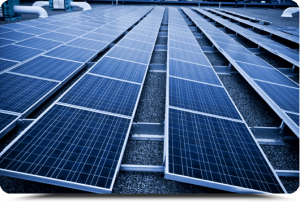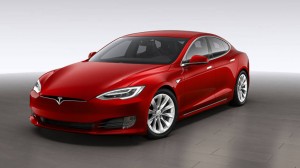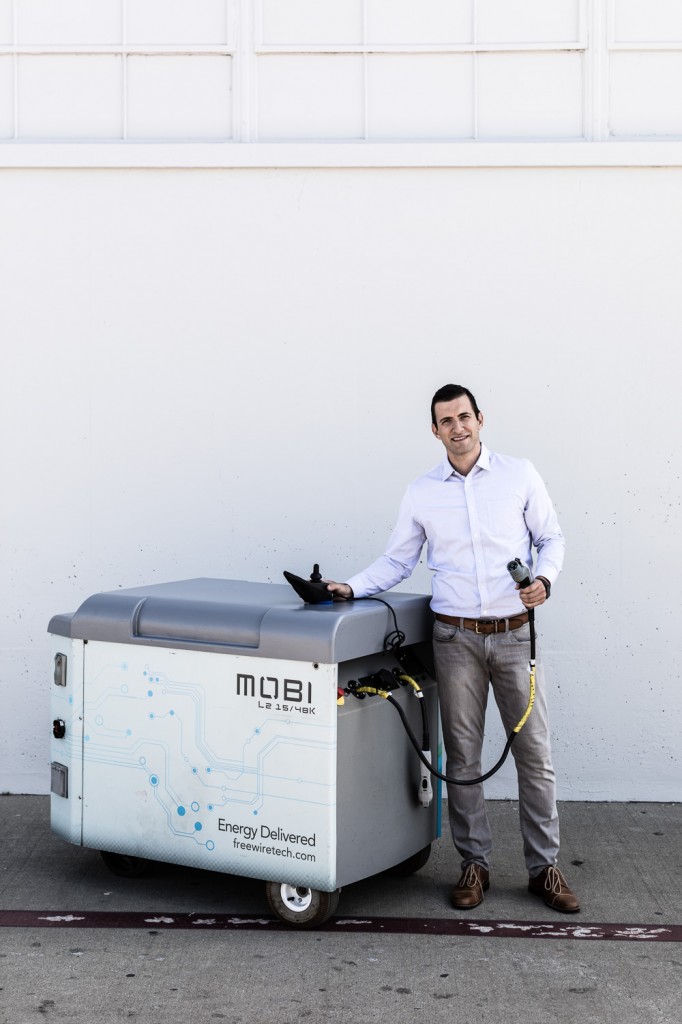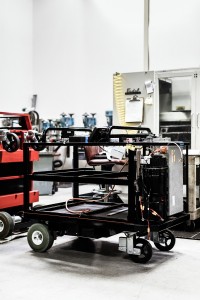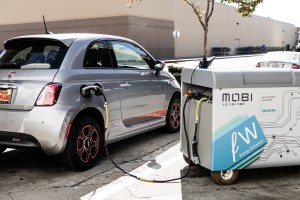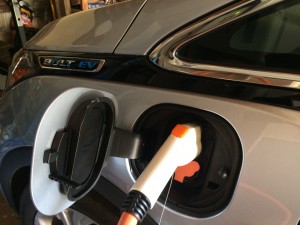 The Trump Administration has not given positive indications about the U.S. commitment to electric vehicles. Encouraging a transition from vehicles powered by petroleum fuels to locally generated electricity makes sense for air pollution, national security, and economic reasons, but the administration seems firmly committed to advancing the interests of the oil and gas industry instead.
The Trump Administration has not given positive indications about the U.S. commitment to electric vehicles. Encouraging a transition from vehicles powered by petroleum fuels to locally generated electricity makes sense for air pollution, national security, and economic reasons, but the administration seems firmly committed to advancing the interests of the oil and gas industry instead.
Some troubling signs:
- The administration wants to roll back some of the Obama-era fuel economy standards for vehicles, which help boost electric vehicle production.
- The administration may challenge in court past federal waivers granted to California under the Clean Air Act, which allow the state to pursue more stringent standards than those set at the federal level. That waiver authority is central to California’s sovereignty to issue rules like the ZEV (zero-emission vehicle) mandate, which requires automakers to produce a certain number of electric vehicles (or buy credits from those companies that do) per year.
- At the agency level, the administration has discontinued relatively low-lift but big impact programs that boost electric vehicles, like the “Workplace Charging Challenge” at the U.S. Department of Energy. I happened to be on that program’s mailing list, and I got an email on March 27, 2017 that noted the highlights of the program but then said the following:
I am pleased to share with you that DOE is celebrating the success of the Challenge and concluding the formal initiative this month.
But if the federal government continues to pull back support for these efforts and undercut EV-friendly states like California, all may not be lost. And the reason is that the U.S. is not the only game in town. India and China may quickly fill the void, as Reuters reported:
In its “road map”, released in April, China said it wants alternative fuel vehicles to account for at least one-fifth of the 35 million annual vehicle sales projected by 2025.
India is considering even more radical action, with an influential government think-tank drafting plans in support of electrifying all vehicles in the country by 2032, according to government and industry sources interviewed by Reuters late last week.
So has the electric vehicle market already left the garage, so to speak? With prices falling and big automakers committing billions of dollars on new EV models, the continued demand from developing countries like India and China could keep that investment going if the U.S. hits the pause button.
It’s a reassuring development, but also an indication of how the U.S. is at risk of abdicating its leadership — and market share — in this growing industry.
Bret Stephens, the New York Times’ new columnist, got the climate change world into an outrage with his first column last week, which compared climate science to Hillary Clinton’s pre-election polling and argued for restraint from climate advocates.
In his follow up column today, he took a more measured tone, noting that he believes the Earth is warming but that we’re not being careful on the solutions:
“The British government provided financial incentives to encourage a shift to diesel engines because laboratory tests suggested that would cut harmful emissions and combat climate change. Yet, it turned out that diesel cars emit on average five times as much emissions in real-world driving conditions as in the tests, according to a British Department for Transport study.”
In other words, to say we want to take out insurance for climate change is perfectly sensible. But whether we know we’re buying the right insurance, at the right price, is less clear, and it behooves us to look closely at the fine print before we sign on.
As someone who works day in and day out on climate mitigation policies, I can tell you that Stephens is cherry-picking from a handful of bad examples.
Take his reference to the ethanol subsidies, which resulted from the federal renewable fuel standard, established during the second Bush administration. Yes, the standard did spur more Midwestern corn production to be used for biofuel.
But the policy was never really a climate mitigation measure. It was primarily meant to boost domestic fuel sources, with greenhouse gas reduction as an added selling point but no strict carbon screen on the fuels. If there was a strong carbon screen on the kind of fuel that could qualify, very little of that high-carbon Midwestern corn-based ethanol would have qualified (hence the opposition to the standard even from some environmentalists).
For a better climate policy model on biofuels, just look to California. The state’s low carbon fuel standard (which encourages biofuel production like the renewable fuel standard but with a strong low-carbon requirement) disfavors land-intensive corn for true low-carbon biofuel, like in-state used cooking oil (surprisingly a growing percentage of the state’s biofuel).
Stephens’ reference to the British diesel problem is also unfortunate. Most climate policy experts will tell you that the best way to reduce emissions from transportation is through battery electric vehicles, as long as the electricity doesn’t come exclusively from coal-fired power plants (in which case hybrid vehicles yield better carbon reductions). Other fuels that can work include low-carbon biofuels and possibly hydrogen, depending on the energy source used to produce it. Diesel isn’t on the list, at least in places like California, unless it’s biodiesel.
 On that subject, biodiesel does emit conventional pollutants, an issue we’re grappling with in California, as evidenced by the POET lawsuit against the California Air Resources Board’s low carbon fuel standard. Biodiesel is great at reducing carbon emissions but also emits nitrogen oxide (NOx) — a subject we covered in Berkeley/UCLA Law’s 2015 Planting Fuels report.
On that subject, biodiesel does emit conventional pollutants, an issue we’re grappling with in California, as evidenced by the POET lawsuit against the California Air Resources Board’s low carbon fuel standard. Biodiesel is great at reducing carbon emissions but also emits nitrogen oxide (NOx) — a subject we covered in Berkeley/UCLA Law’s 2015 Planting Fuels report.
Resolving this conflict among pollutants will take a policy balancing act, but it ultimately shouldn’t obscure the huge economic and environmental benefits from switching transportation fuels from petroleum to electricity and low-carbon biofuels. Stephens simply ignores this tried-and-true approach, which is resulting in swift advancements in electric vehicle adoption in places like California, Europe, and even China.
To be sure, care is needed when it comes to developing climate policies, and I’d agree with Stephens on that front. But the main concern is around managing the economic impacts of transitioning the grid and transportation fuels to cleaner sources. We have to go slow to avoid price shocks and bring the costs of these new technologies down.
California is doing just that, with a measured, careful plan to bring down the emissions curve steeply over the coming decades. Our economy is now less carbon intensive than it was in the 1990s and has been growing rapidly, too — which is at least an indication that climate policies aren’t getting in the way, if not actually serving as a boost.
There’s no reason that the country as a whole can’t follow suit, except that we have national writers like Stephens who cherrypick their way into sounding like reasonable skeptics — when they’re really just misleading people.
The election of Trump may stall the nation’s progress toward more electric vehicles, but the market momentum is undeniable. Tesla, for example, is now valued higher by Wall Street than General Motors.
To discuss the future of EVs going forward, I’ll be on KQED radio’s Forum today at 10am. The other guests include:
- Joel Levin, executive director, Plug In America
- Loren McDonald, marketing evangelist and blogger
Please tune in at 88.5 FM in the Bay Area and weigh in with your questions. Even if you don’t live in the Bay Area, you can stream it live.
UPDATE: Audio is now posted.
They should be. If some of the projections about declining battery costs are accurate, battery-powered cars will be much cheaper (and better) than gas-powered cars within possibly the next decade.
Electric vehicles like the Tesla Model S are already outselling similar gas-powered cars in their class, and a new generation of mass-market, long-range EVs have arrived with the Chevy Bolt, soon to be followed by the Tesla Model 3 and the new Nissan LEAF.
As E&E News (paywall) reported, one bullish study from the Grantham Institute for Imperial College London and the Carbon Tracker Initiative suggested that electric vehicles could make up around 35 percent of the market by 2035 and two-thirds by 2050:
“The oil and gas industry feels that EVs aren’t anywhere past being niche products,” said Luke Sussams, a senior researcher at Carbon Tracker and one of the authors of the report. “The model shows what might happen if EVs are further along that S curve [of consumer acceptance], just before that inflection point of mass uptick.”
The scenario outlined in the report, which also includes an aggressive projection for solar energy, would see oil and coal demand peak in 2020 and fall through 2050. The amount of oil displaced by EVs could reach around 2 million barrels per day by 2025 — the same volume that caused the 2014-15 oil price collapse.
I’m bullish on electric vehicles overtaking gas-powered ones for two reasons: first, electric vehicles are superior to gas-powered ones in terms of performance and convenience (less maintenance and easy home fueling if you have a garage); and second, battery prices have declined remarkably just since 2010. I remember the days of $1000 per kilowatt hour in battery prices that year; now Chevy reportedly bought batteries for the Bolt at $165 per kilowatt hour.
But the oil industry may not be taking this challenge that seriously. I know someone who works at Chevron, and he told me had presented some of his superiors with an analysis on the “threat of EVs.” But the company, in his words, is run by old-style Texas oil guys. Oil is all they know, and they’re not in a position to transition the company dramatically to a completely different product.
My guess is the oil industry will have another decade or so of a good ride, but they’re facing diminishing market share. Policies like California’s low carbon fuel standard and zero-emission vehicle mandate won’t help them either.
If I worked for an oil company, I’d be advising them to figure out how to make money off this new paradigm. It’s coming more quickly than they may realize.
 Could California’s entire set of vehicle emission standards, including its zero-emission vehicle program that has helped launch the global electric vehicle market, come under federal assault? It’s a worst-case scenario that would require congressional action, but it’s amazingly within the realm of possibility.
Could California’s entire set of vehicle emission standards, including its zero-emission vehicle program that has helped launch the global electric vehicle market, come under federal assault? It’s a worst-case scenario that would require congressional action, but it’s amazingly within the realm of possibility.
California has unique authority under the federal Clean Air Act to regulate vehicle emissions. That authority requires the state to first seek a “waiver” from less-stringent federal standards from the U.S. Environmental Protection Agency. The EPA always granted those waiver requests until the George W. Bush administration came along. His administration refused to grant a waiver for the state to regulate greenhouse gas emissions from tailpipes.
California sued, but the Obama Administration took office before the case was resolved and then granted the waiver. But now new EPA administrator Scott Pruitt is looking not only to refuse to grant future waivers but possibly roll back previously granted ones (Buzzfeed covered the issue on Tuesday with some quotes from yours truly). It would be an unprecedented step that would be sure to be challenged in court.
But the even deeper concern is that the litigation might prompt Congress to revoke California’s waiver authority altogether. The Atlantic has a great piece on the situation, including this passage quoting Debbie Sivas at Stanford:
She feared that this fight in the courts would accompany a political fight in Congress, as the administration would seek to amend the Clean Air Act to remove California’s waiver power before they lost the lawsuit.
And—almost in preparation for that battle—she asked Americans to take a step back and examine why regulating greenhouse gases from cars is important.
“It feels like this very technical thing about, ‘blah blah, waivers, blah blah blah,’ but it’s a very important part of the climate policy,” Sivas told me. “People aren’t going to stop driving, really. And transportation’s 40 percent of carbon emissions. The only way to get [those emissions] down is to get [fuel] mileage up. If the feds are going to take their foot off the gas—and to fight the states who are doing it—it could be a huge setback,” said Sivas.
There’s a lot at stake in this fight. Federal fuel economy standards are prompted by California’s authority on the issue, and future standards could definitely be at risk. I have a lot of confidence in California’s legal team to fight this assault, but it would be a major setback for the time being.
But if Congress were to revoke the waiver status, and even retroactively apply it, the future of both cleaner gas-powered cars and the nascent electric vehicle market would be at tremendous risk.
Tesla driver Alex Venz got a 24-hour test drive of the new Chevy Bolt EV, as I did, and put together an extended video review. You could read an article write-up or see the video above. He gets into much more detail on all the various features and offers some helpful comparisons to the Tesla Model S (including his own 0-60 mph acceleration tests).
Meanwhile, initial sales figures for the Bolt are looking good, in just its first full month on sale in January. Green Car Reports describes the numbers:
When GM released its sales results this morning, the number turned out to be 1,162 deliveries. That brings total Bolt EV sales in roughly six weeks to 1,741—far ahead of both the Chevrolet Volt and Nissan Leaf after their first two months exactly six years ago.
The Volt plug-in hybrid, meanwhile, logged its own January sales of 1,611, against 996 in January 2016.
Including a few remaining Spark EVs, that means GM sold about 2,800 cars with plugs last month.
This is definitely a car to watch going forward.
Repurposing used EV batteries offers the promise of cheap energy storage, which brings significant environmental and economic benefits for customers, ratepayers and utilities. Repurposed EV batteries also have the additional benefit of providing a revenue stream for EV owners and manufacturers, as well as a chance to avoid the environmental impacts from recycling the batteries prematurely.
Freewire Technologies represents one of the leaders in this field, and I had an opportunity this week to visit their office in San Leandro and discuss the future of the business with CEO Arcady Sosinov.
Freewire takes used Nissan LEAF batteries (and other batteries), tests them for quality, and then repackages the battery modules to fit on a mobile unit called the “Mobi” (see photo to the left). The Mobi batteries are wired together and then packaged for delivery.
The initial market for the Mobi was for mobile EV charging, either Level 2 or fast charging (see photo below). Companies with a Mobi give their employees and visitors the option to charge their vehicles without having to move to a fixed charging spot. The company also doesn’t have to trench wiring to install such a charger.
Meanwhile, when the Mobi is re-charging, it can serve as stationary storage to either charge more cheaply at night for daytime dispatch or potentially offset demand charges. At peak times, property owners can dispatch stored electricity in the Mobi instead of pulling more expensive electricity from the grid.
Recently, other companies have purchased Mobis to replace diesel generators, particularly film and television studios that are shooting off-site. The Mobis are cleaner and quieter and have more reliable power. Utilities have also been buying Mobis as distributed storage to ease usage on congested substations. In addition, some cities have purchased them as backup power units in case of power outages that can also provide grid services when plugged in. Even airports have been buying Mobis to charge the onboard electronics on airplanes without polluting generators on the tarmac.
Ultimately, the sky is the limit for the use of these inexpensive, mobile energy storage units. And as thousands of used EV batteries come out of cars in the coming years, the supply increase will bring down costs and lead to even more innovation.
Arcady is currently expanding his business to meet the growing demand and supply, with plans to fill out a much larger space in his building. He’s bullish about the opportunities, particularly with increasing battery supply and growing recognition of the need for cleaner energy sources, particularly in polluted air districts.
Policy barriers definitely remain, as well as questions about how well the batteries will perform in operation over the long term. We detail some of the policy needs in the UC Berkeley/UCLA Law report Reuse and Repower. But as more companies invest in the opportunities, and innovation continues with companies like Freewire, the constituencies and pressure to change outdated laws and regulations that stymie repurposed battery deployment will only grow.
And that’s good news for Freewire and the industry in general, which is poised to be an important part of our energy storage future.
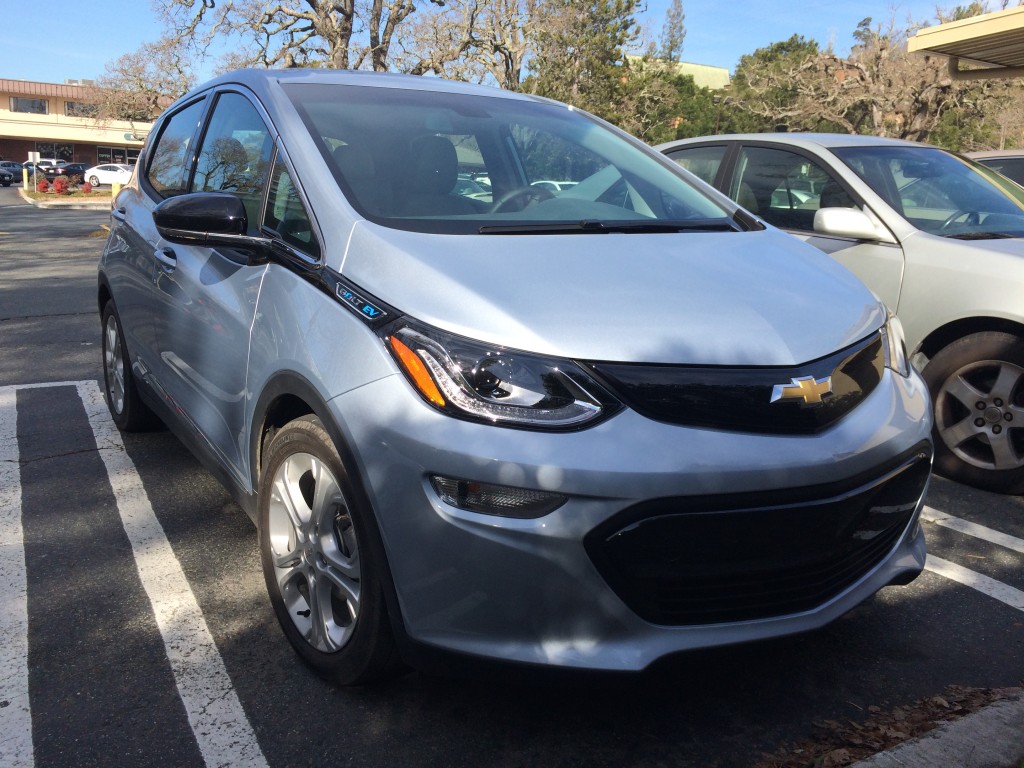 Sunday through Monday, I had the opportunity to do an extended test drive with Chevy’s new long-range Bolt EV. I received no money or other compensation from GM to do so, but I simply asked someone I knew at GM if I could take a spin. And I figured it was worth blogging about for those interested in getting a Bolt or an EV in general.
Sunday through Monday, I had the opportunity to do an extended test drive with Chevy’s new long-range Bolt EV. I received no money or other compensation from GM to do so, but I simply asked someone I knew at GM if I could take a spin. And I figured it was worth blogging about for those interested in getting a Bolt or an EV in general.
In short, this is an excellent vehicle that will greatly expand the market for EVs. It’s got the range of a Tesla (238 rated miles per charge) at half the price (about $30,000 or less after federal and state incentives) and enough cool features to make the car feel like a technological innovator and not just an EV “check box” from a disinterested automaker.
I’ve driven a Tesla Model S and Roadster, Chevy Volt, BMW i3, Fiat EV, and Mercedes B Class, and my regular vehicle (when I’m not taking transit) is a Nissan LEAF. So I know EVs fairly well. The Bolt stacks up solidly or better against all of them, with all the benefits of a smooth, quiet and fast electric drive.
The highlights:
 Range: it’s a joy having 238 miles in a 60 kwh battery. The psychological relief is palpable. I didn’t feel I even needed to check the available miles most of the time, and it was amazing to think I could relatively easily drive to the mountains or even Southern California from the Bay Area in the vehicle with just a charge or two along the way. It’s by far the biggest selling point and will make the car a viable everyday option for most drivers.
Range: it’s a joy having 238 miles in a 60 kwh battery. The psychological relief is palpable. I didn’t feel I even needed to check the available miles most of the time, and it was amazing to think I could relatively easily drive to the mountains or even Southern California from the Bay Area in the vehicle with just a charge or two along the way. It’s by far the biggest selling point and will make the car a viable everyday option for most drivers.- The “L” mode regenerative braking: most EVs have regenerative braking, which repowers the battery a bit from the energy taken from slowing down the car. The Bolt takes that to another level, as taking your foot off the accelerator can quickly bring the car to a dead stop without needing to brake. Not only does that save battery energy, it actually makes driving easier as you don’t need to switch your foot pedals very often.
 On-board electronics: the car seems pretty high-tech, from my limited perspective. It features a pretty big touch screen, wi-fi in the vehicle, and plenty of info about energy usage, plus smart phone enabled communications and mapping that can be voice-activated through Siri. It basically functions as an extension of your phone.
On-board electronics: the car seems pretty high-tech, from my limited perspective. It features a pretty big touch screen, wi-fi in the vehicle, and plenty of info about energy usage, plus smart phone enabled communications and mapping that can be voice-activated through Siri. It basically functions as an extension of your phone.- Roomy interior: even though the car is relatively short in length, the interior feels roomy and spacious. I like the thin seats they chose, which are comfortable but leave room in the back.
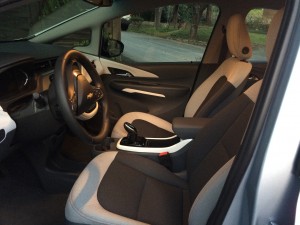 Safety features and sensors: the side-view cameras light up when cars are in your blind spots, and the rear video display sends a warning when you’re backing up and a car is passing by. Those features can save you some major hassles from avoided collisions.
Safety features and sensors: the side-view cameras light up when cars are in your blind spots, and the rear video display sends a warning when you’re backing up and a car is passing by. Those features can save you some major hassles from avoided collisions.
Downsides:
- Aesthetics: for those looking for a sporty exterior, this ain’t your car. It’s definitely a Chevy in the non-corvette mode. It’s not an ugly car, but it’s not going to turn heads like a Tesla might.
- Self-driving features lacking: I liked the sensors and safety aspects, but this car won’t park itself or do other snazzy things that you might get from higher-end models.
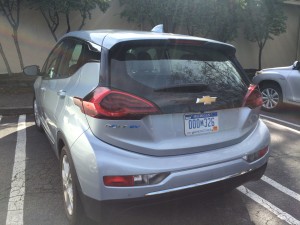 Not a huge trunk: you probably can’t drive around much more than a few suitcases in the trunk. It’s not a tiny space, just not a large one either.
Not a huge trunk: you probably can’t drive around much more than a few suitcases in the trunk. It’s not a tiny space, just not a large one either.- Lack of display on battery percentage remaining: in my Nissan LEAF, I judge my range by the percentage of battery remaining, rather than the car’s estimated miles that I could still drive. That estimate can be wildly imprecise, depending on my speed and elevation gain, among other factors. I searched but couldn’t find a comparable percentage graphic on the Bolt display, just a visual representation of how much charge remained, which was less helpful.
Overall, given the price and all the benefits you get, this car is a great deal. I think most consumers will see it that way. It firmly leaves cars like the Nissan LEAF and BMW i3 in the dust.
Sure, you can spend an additional $10,000 or so and get a sporty Tesla Model 3 later this year or early next year. But in the meantime, for the budget and the quality, the Chevy Bolt is a true game-changing next generation electric vehicle.
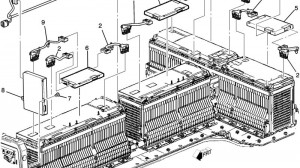 Used EV batteries — when they’re no longer able to store enough energy for driving but still have a lot of capacity left — seem like a great energy storage solution. After all, it’s cheap storage that could be used for all sorts of purposes, from backup power to bulk grid storage when multiple batteries are stacked.
Used EV batteries — when they’re no longer able to store enough energy for driving but still have a lot of capacity left — seem like a great energy storage solution. After all, it’s cheap storage that could be used for all sorts of purposes, from backup power to bulk grid storage when multiple batteries are stacked.
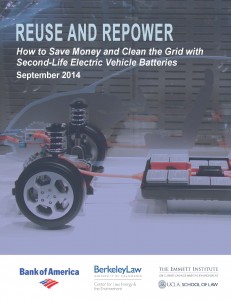 I’m personally bullish on the opportunities and have blogged about all the investments going on in demonstration projects. I also authored a report for UC Berkeley and UCLA Law schools on the potential: Reuse and Repower: How to Save Money and Clean the Grid with Second-Life Electric Vehicle Batteries.
I’m personally bullish on the opportunities and have blogged about all the investments going on in demonstration projects. I also authored a report for UC Berkeley and UCLA Law schools on the potential: Reuse and Repower: How to Save Money and Clean the Grid with Second-Life Electric Vehicle Batteries.
But Charged EVs now reports on a new Lux Research study that thinks recycling will make more sense than repurposing:
In “Reuse or Recycle: The Billion-Dollar Battery Question,” Lux says that reusing batteries from EVs “will deliver questionable returns due to reduced performance, limiting them to applications with less frequent and shallower depth of discharge cycles.”
Lux forecasts that, in 2035, 65 GWh worth of used EV batteries will come on the market each year. An oversized 11.2 kWh residential storage system made from second-life batteries will cost about $4,600, compared with $6,000 for a new 7 kWh system. However, reduced round-trip efficiency and cycle life make a second-life system a poor fit for residential units and other daily cycling applications.
It’s an open question to some extent. But the bottom line is we really don’t know how the batteries will perform. They may maintain their diminished second-life capacity for a long time. Or they might be easily repaired to boost cycle life and durability.
Furthermore, we don’t know all the different uses for these batteries. Even if the batteries aren’t great for deep discharge and regular use, there could be many applications involving less usage, from backup power to bulk aggregations that put less strain on any one battery in the chain. Ultimately we’ll need to see how the market responds and innovates.
Studies like these will therefore be more meaningful once we get data on some of these ongoing demonstration projects. Otherwise, it’s premature to make an assessment either way.

